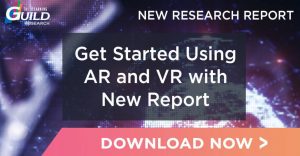David Kelly’s Curated L&D Content for the Week of 4/23/18
 This week’s curated content includes links exploring the following:
This week’s curated content includes links exploring the following:
- can training be used to eliminate bias?
- what does blended learning look like in 2018?
- a great resource for free sound effect assets
- How Google is keeping history alive via VR
- What makes VR learning immersive?
- Book suggestions to add to your reading list
Can Training Eliminate Biases? Starbucks Will Test the Thesis by Noam Scheiber and Rachel Abrams
Last week there was an incident involving an arrest in a Philadelphia Starbucks led to a huge conversation in our country around biases. After the incident, Starbucks management announced that stores will be closing all of its stores on May 29 to offer anti-bias training to its employees. This article is less about the incident at Starbucks, and more about what role training can play when the behavior that needs to be changed is around biases.
How Blended Learning Today Is Different In A Hyperconnected World by David James
Blended Learning is a term that has been with us for quite some time. It, at an oversimplified level, often refers to combining elearning and classroom into a single learning program. But times have changed, and what falls under the heading of “elearning” is a wide array of tools and techniques that all target unique needs. This article looks at what “Blended Learning” means within the learning technology landscape of 2018.
The BBC is letting you download more than 16,000 free sound effect samples from its archive by Ben Rogerson
The assets we use to build learning programs can often be expensive. Finding lower cost or better yet free assets is a great way to lower the budget for your projects. This post highlights a great selection of free assets in an often overlooked category: Sound effects. The post is referencing the BBC’s recently making a huge array of sound effect samples available for use. It’s another great resource to bookmark should you need to utilize these sound files in a project – just don’t use them to add a sound effect to every slide transition please. :)
Google’s New VR Tours Let You Experience Imperiled Cultural Sites Around The World by Sean Captain
One of the simplest and yet most powerful ways VR can be used for learning is by enabling virtual “field trips”. Using virtual reality and high resolution 360 video or photos, people are able to transport themselves to places around the globe and beyond, and learn about what life is like in a place they may never visit in person. This article explores a new project from Google that takes that experience one step further, enabling people to visit places that they may never visit not because they can not travel there, but because the place itself is at risk of disappearing for one reason or another. It’s another great example of how VR can be used in powerful and long-lasting ways.
12 Steps Toward Immersive Learning by Dov Jacobson
Virtual reality is widely seen as one of the most immersive technologies available today. It’s why VR is being looked at so closely as a tool for training. But what exactly are the elements of a VR experience that make it Immersive? This post does a great job of breaking VR immersion down to 12 unique elements, providing a definition and description for each.
Five New L&D Books To Check Out by Connie Malamed
Looking for some great books to read to improve your L&D knowledge and skills? Look no further than this list; there’s sure to be at least one book to add to your reading list.
AR and VR: The New Way to Learn
 The eLearning Guild’s just-released Research Report examines the benefits and barriers of using augmented reality and virtual reality in organizations and how these organizations access and utilize the data derived from the AR and VR systems. What’s Your Reality? AR and VR for Learning, by Jane Bozarth, explores the data collected from a survey of our community and shares key findings. You’ll learn not only what organizations are doing with AR and VR today, but how organizations see their usage emerging in the near future.
The eLearning Guild’s just-released Research Report examines the benefits and barriers of using augmented reality and virtual reality in organizations and how these organizations access and utilize the data derived from the AR and VR systems. What’s Your Reality? AR and VR for Learning, by Jane Bozarth, explores the data collected from a survey of our community and shares key findings. You’ll learn not only what organizations are doing with AR and VR today, but how organizations see their usage emerging in the near future.
The Executive Summary is available to all, with the full report available to eLearning Guild Members who subscribe to any of our content packages.
Looking for a deeper dive into AR and VR for learning? Join us for Realities360 this June in San Jose!

Leave a Reply